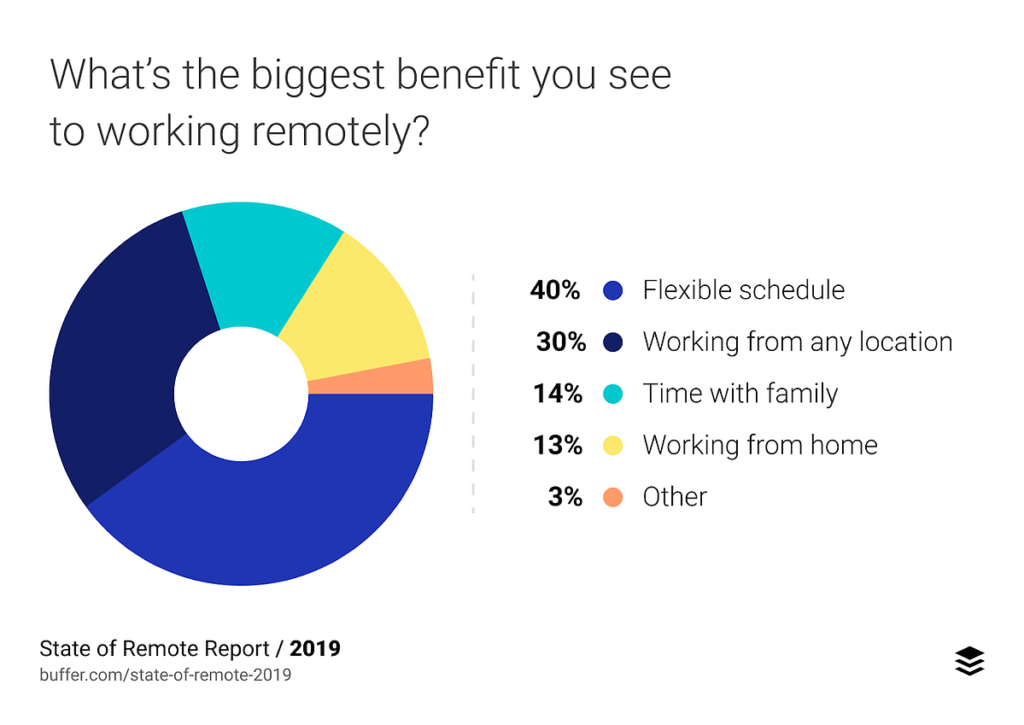Attracting and retaining a high-quality, distributed workforce can be a challenge. With candidates spread across a state, country, or even globally — each with different working arrangements — things can easily feel chaotic and difficult to manage.
If you can relate, never fear. You can do plenty of things to make things easier for yourself and your new hires – and it all begins with your recruitment process.
There’s lots to cover, so let’s dive straight in!
What’s in?
Like what you see?
Don’t miss out. Subscribe to our quarterly digest to get the latest TA and TM resources delivered right to your inbox.
What’s a distributed workforce?
In short, a distributed workforce is where a large portion of your staff routinely work from different locations. This could include dispersed office-based teams, fully remote teams, mobile workers, and workers that rotate between working in-office and remotely.

It’s clear that because of COVID-19 the ‘flexible workplace’ is on the rise. Nancy Rothbard, a professor at the Wharton School, predicts an increase in the ‘hybrid working model’ even after the pandemic subsides. So, if your employees elect to work between both an office and remotely, you’ll need to learn to manage a distributed workforce.
The advantages and disadvantages of a distributed workforce:
The Pros:
- With less of a need for office space, you’ll reduce your overhead.
- You can utilize a broader and more diverse pool of talent across a variety of locations.
- You should see a boost in productivity, as employees spend less time commuting and can focus better without the typical distractions that come with an office environment.
The Cons:
- It takes more time and effort to ensure the cybersecurity of a distributed workforce. Both your customer and employee data must be stored securely, which means you’ll need infrastructure in place to facilitate that.
- Communication and collaboration issues are more likely to occur.
- Employees may experience social isolation, or feel disconnected from the larger organization.
Strategies for Success
Despite the obstacles facing recruiters during global pandemic, the challenges of distributed workforces won’t only be temporary. Remote, hybrid and distributed workforces will continue to grow in popularity, and to achieve success, your organization needs to update your processes to reflect the new world of work.
Let’s dive in!
1. Communicate your EVP
An EVP, or employee value proposition, describes: “An ecosystem of support, recognition, and values that an employer provides to employees to achieve their highest potential at work.”
To attract the highest quality talent, you need to clearly communicate your EVP. Employees and potential candidates want to know what they have to gain by working at your organization over your competitors. Just because some employees won’t be in-office doesn’t mean you can skip out on benefits and perks that most candidates would expect in an office environment.

Of course, you can’t offer the same benefits as you would your in-house employees. For instance, enticing workers with a fully stocked kitchen and reimbursing travel expenses doesn’t (always) apply to a distributed workforce.
Instead, here are some things you can include in your EVP for all employees:
- Professional development: Whether you offer a stipend for employees to purchase learning materials, tickets, books, courses, etc., for their own professional development or you supply online classes and/or access to conferences, your distributed employees will want to grow professionally.
- Ample paid time off: It’s not uncommon for remote employees to work longer hours than in-house workers. In response, award this dedication with a generous amount of paid time off. Some enterprises go as far as to offer unlimited vacation days!
- Vacation credit: Besides offering a generous vacation policy, some enterprises provide an allowance to fund the employee’s vacation.
- Fitness tracking: Issuing distributed workers with fitness tracking devices like a FitBit or Samsung Galaxy Fit is another fabulous perk, which, when used to the fullest, can enhance your employee’s health and happiness. Depending on your chosen device, you can even promote a sense of community by running fitness competitions and groups where employees encourage one another to get active!
- Pay for a coworking space membership: Some workers like to get out of the house every now and then, which is where a coworking space provides a great change of scene. Or, perhaps you could offer gift cards for employees to purchase beverages and snacks while they’re working out and about.

2. Start with recruitment
When you and your candidates can’t meet face-to-face, you need a virtual hiring process that enables you to effectively select top candidates. This is especially true where distributed workforces are concerned as the candidate pool is significantly larger, especially if you’re looking to hire talent globally.
This makes filtering through the masses of applicants all the more imperative, which is where investing in an applicant tracking system is worth its weight in gold. This kind of software makes it easy to set candidates ‘filter questions.’

It’s up to you whether you ask simple “yes/no” questions based on job qualifications, experience, skills, etc. Or include open-ended questions that enable the applicant to go into more detail. Incidentally, open-ended questions are great for getting an insight into the candidate’s personality, which may come in handy for assessing whether the applicant is the right cultural fit.
Put simply, your screening questions should set a threshold that all candidates need to meet. This goes a long way to shortlisting applicants with the right skills, experience, education, and attitude to do the job justice and in a way that complies with your company’s culture and values.
3. Focus on critical competencies
Candidates need the right skills to do the job and work effectively in a distributed work setting. This means looking for candidates with integrity, a good work ethic, and excellent planning, organization, and problem analysis skills.
Here are some questions you could ask during the interview stage to assess whether the candidate possesses the necessary attributes to thrive in your distributed workforce:
- To evaluate their ability to work independently: How did you work when your supervisor wasn’t present? What did you do when you had to make a decision? How do you prioritize projects?
- To assess whether they’re a self-starter: What have you done in the last year to improve yourself (either personally or professionally)?
- To test their ability to communicate remotely: How do you prefer to touch base with coworkers and supervisors throughout the workday?
…These are just a few examples, but you get the idea!
4. Improve your remote interviews
If you’re seriously considering establishing a distributive workforce, you need a reliable video interviewing tool. In contrast to telephone interviews, video conferencing is the next best thing to an “in-person” interview. Namely, because you can pick up on non-verbal cues like their attire, facial expressions, posture, gestures, and tone of voice. These all play a role in deciphering whether a candidate is a good fit for your team.
You could even consider holding peer interviews remotely. For the uninitiated, a peer interview does precisely what it says on the tin. It’s where a candidate is interviewed by one of their peers, I.e., by another employee(s) of the company, who then de-briefs the hiring manager. This interview technique is certainly worth considering if you’re a smaller company where an excellent cultural fit is imperative.
You and your team should also brush up on ‘video interview etiquette,’ especially if you are working remotely as the interviewer. Here are a few tips to bear in mind:
- Host the interview somewhere quiet, where you won’t be disturbed.
- Silence any smartphone, tablet, desktop, notifications. Your candidate deserves your full attention.
- Look professional. This means dressing smartly and removing any clutter from the background.
- Position yourself so that natural light shines in front of you, rather than from behind. Otherwise, you risk looking like a silhouette.
- Leave a few seconds before speaking to ensure the applicant has definitely finished talking. Sometimes over video chat, it’s difficult to pick up whether the person has finished speaking (especially if there’s a slight delay in connection). So, waiting a short while serves as a buffer to prevent you from talking over one another.
- Conduct a test run to ensure everything is working as it should be from your end. Perhaps asks a coworker or friend to call to confirm your camera, your microphone, and connection speed are up to par.
5. Reevaluate compensation plans
Is the compensation of your distributed workforce going to be location dependent (FYI, this is the model Facebook’s opted for)? Or are you focusing purely on the job itself? At the time of writing, there’s lots of discussion about how to best compensate distributed workers. So carefully consider the pros and cons of each before making any final decisions.
The state of diversity recruiting in 2020
6. Build a culture of trust
Trust is the cornerstone of a successful, productive, distributed workforce, and as such, it needs embedding into your company culture.
Managers need to trust that their employees will complete their work by the agreed-upon time and to a decent standard. Likewise, employees need to have faith that their leadership team will provide the support they need to do their job justice.
One of the easiest ways to build trust is consistency in everything you do. Everyone in your team should be treated equally and with respect, and workflows and protocols should be applied predictably. On top of that, it also helps to be fully transparent about your team’s day-to-day operations. This means openly sharing work schedules, project progress, and task statuses to hold everyone accountable for their output.
7. Engage your employees
It’s not easy to build and encourage employee engagement when workers are scattered across multiple locations. This puts even more of an onus on you to create opportunities for workers to connect.
For instance, you could set up (and encourage other team members to do the same) extracurricular activities. These should be open to everyone to participate in.

Here are a few ideas to help get the ball rolling:
- An online book group
- An online quiz team
- Online course enrollment
- A fantasy football league
- An online gaming tournament
To further boost employee engagement, you could also:
- Send out regular company updates – especially if there have been any policy changes, mergers, a leadership turnover, etc.
- Encourage cross-team collaboration – perhaps set up a team Slack channel or Whatsapp group?
- Conduct employee engagement surveys to pinpoint what can be done better to connect your distributed workforce
Are you ready to hire a distributed workforce?
In the era of social distancing and minimal movement, distributed workforces are becoming increasingly common. Suppose this is something you’re looking to adopt within your own company. In that case, you can’t expect your regular workforce strategies to apply to your distributed workforce. Instead, place a heavier focus on reinventing your recruitment process and how you position and promote your EVP, and encourage trust and engagement within your organization. This is crucial for ensuring you attract and retain the best possible distributed workers.
How AI & recruitment technology is changing recruiting experience
Find out how tech has helped other companies grow by enhancing both the recruiters’ and candidates’ experience!




